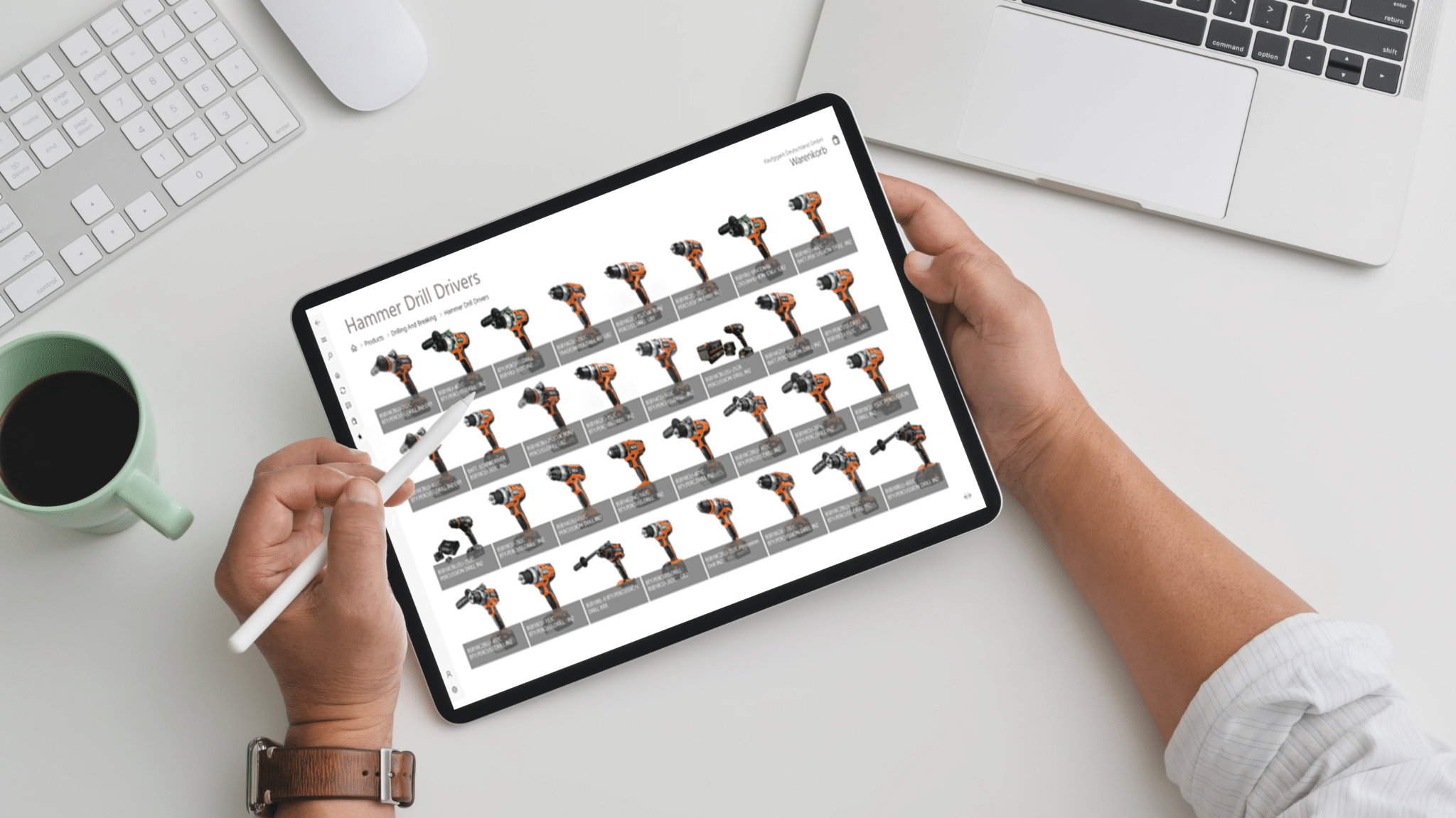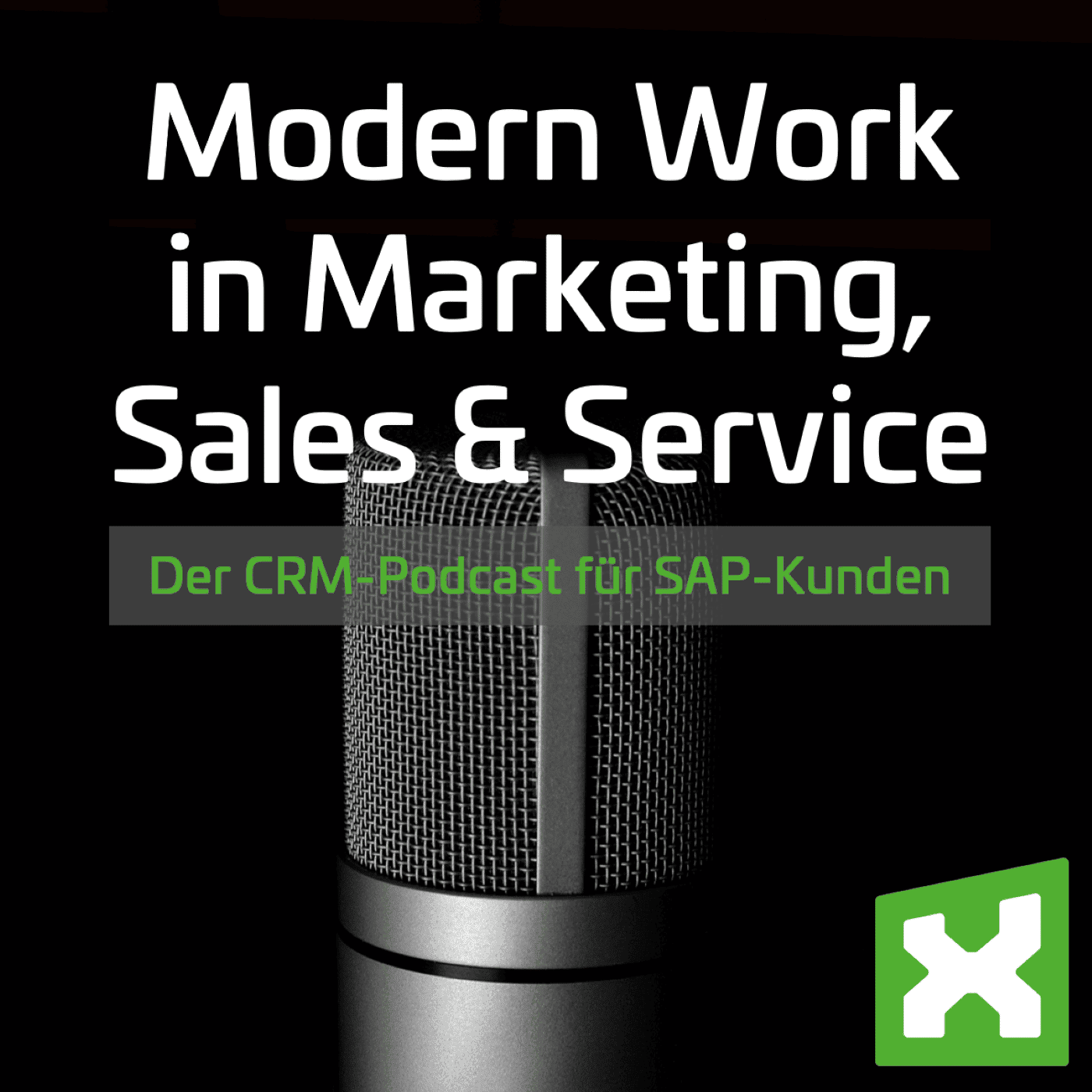Digitization of sales appointments with the mobile product catalog
Digitization is being talked about in all areas. Even in sales, the word has become indispensable and the term “digitization of the sales appointment” is heard more and more often. But what exactly is meant by this? It’s not about the appointment itself, because this cannot always be implemented completely digitally. Rather, it’s about the media or software that is used to design a visit to the customer.
In the past, a classic visit appointment went as follows: The sales representative scheduled the appointments in the calendar, then called the customers and gathered information about the appointment in several places. At the on-site meeting, the product presentation was then made via catalogs or even still samples from the case. The order was then written down on a pad. In the course of the visit follow-up, the sales representative recorded a visit report and confirmed the order by fax to the customer.

Visit planning and preparation
A CRM system can support the process of planning and preparing visits. For example, weekly planning can be implemented here in a potential-driven manner. Among other things, according to questions such as: Which customers have not been visited for a long time? Which customers have open opportunities with a high chance of closing a deal?
The 360° view of the customer, in which all information and data is collected across all areas, is particularly helpful in preparing visits. The sales representative can see at a glance what actions the customer has taken recently. Did he or she register for an event such as a webinar? When was the last time he or she logged into the customer portal? Were there any shopping cart abandonments or even complaints? Gimmicks such as route planning paired with Outlook integration directly from the appointment makes life easier. However, when it comes to executing the on-site visit, CRM systems usually can’t help the sales person much. Selling itself is first and foremost a personality matter. Here, the factors of empathy, trust and attentiveness play a very central role. But of course, products also have to be presented during the appointment. Sales wants to exploit the customer’s full potential as far as possible and – if possible – without using a lot of paper.
A digital product catalog provides support for product presentation on site
The solution for this is called a digital product catalog. With a product catalog that can be called up on a tablet, a product presentation to the customer can also be carried out digitally: the mobile and offline-capable presentation of the products contains all the necessary information as well as, images and videos of the products that interest the customer. Also references, hints like “other customers also bought” or the current stock should be available in such an application. After the digital product presentation, the salesperson can then immediately add the products the customer has decided on to the shopping cart and trigger an order – all fully integrated with the ERP & CRM.
This also makes it easier to follow up on visits, since the entire presentation process is recorded and thus exactly what was shown to the customer is documented. Now, of course, the question arises for which application scenarios exactly a digital product catalog is needed. The question is easy to answer: All companies that already have a web store or are planning to introduce a web store. After all, products that can be presented digitally in a web store can then also be presented digitally in a sales meeting. First and foremost, of course, this is primarily the retail sector with its products – especially branded goods. But scenarios are also conceivable in the mechanical engineering sector, for example with spare parts.
Webshop and digital product catalog – one does not exclude the other
Many will now ask themselves: but how do web stores and digital product catalogs fit together and what are the advantages? After all, most people first associate digital product presentation or ordering via digital channels with a classic online store. And that’s right. Because a digital product catalog does not replace a web store. Rather, the product catalog complements the web store. There are still many appointments that take place on site and where it is not guaranteed that a stable Internet connection is available. With the offline capability of a digital product catalog, this is not a problem and even large image or video files can thus be shown without any problems and with high performance.
A practical example here would be that one of our customers uses the digital product catalog in its flagship stores and also at trade shows, because not all products or machines can always be displayed. And at trade fairs, the Internet is often a problem. Another use case would be that of a large manufacturer of power tools, whose sales force uses the digital product catalog on construction sites to present the latest machines to craftsmen on site and takes orders directly on site. However, it is important that the salesperson also has access to all data from the web store (such as images, product descriptions, etc.) – keyword single source of truth. And this can only be achieved if all systems are integrated and data is exchanged with each other. Field and office staff thus have a complete view of the customer, his history and his current activities. And this transparency between inside and outside sales helps to make a more holistic impression on the customer and to build up better customer loyalty. In addition, the internal sales force is relieved, as the field sales force itself can now simply enter the orders directly with the customer. Thus, process efficiency and better customer retention are guaranteed with a digital product catalog.
Briefly summarized
By providing a 360° view of the customer, a CRM system helps sales to optimally plan and follow up on customer visits. And with the digital product catalog component, on the one hand, real sales experiences can be created for the customer during the visit and, on the other hand, the sales employee is supported during the appointment with the product presentation and can access important product data from the web store, CRM or SAP. This creates a fully integrated view of the customer and a single source of truth.

